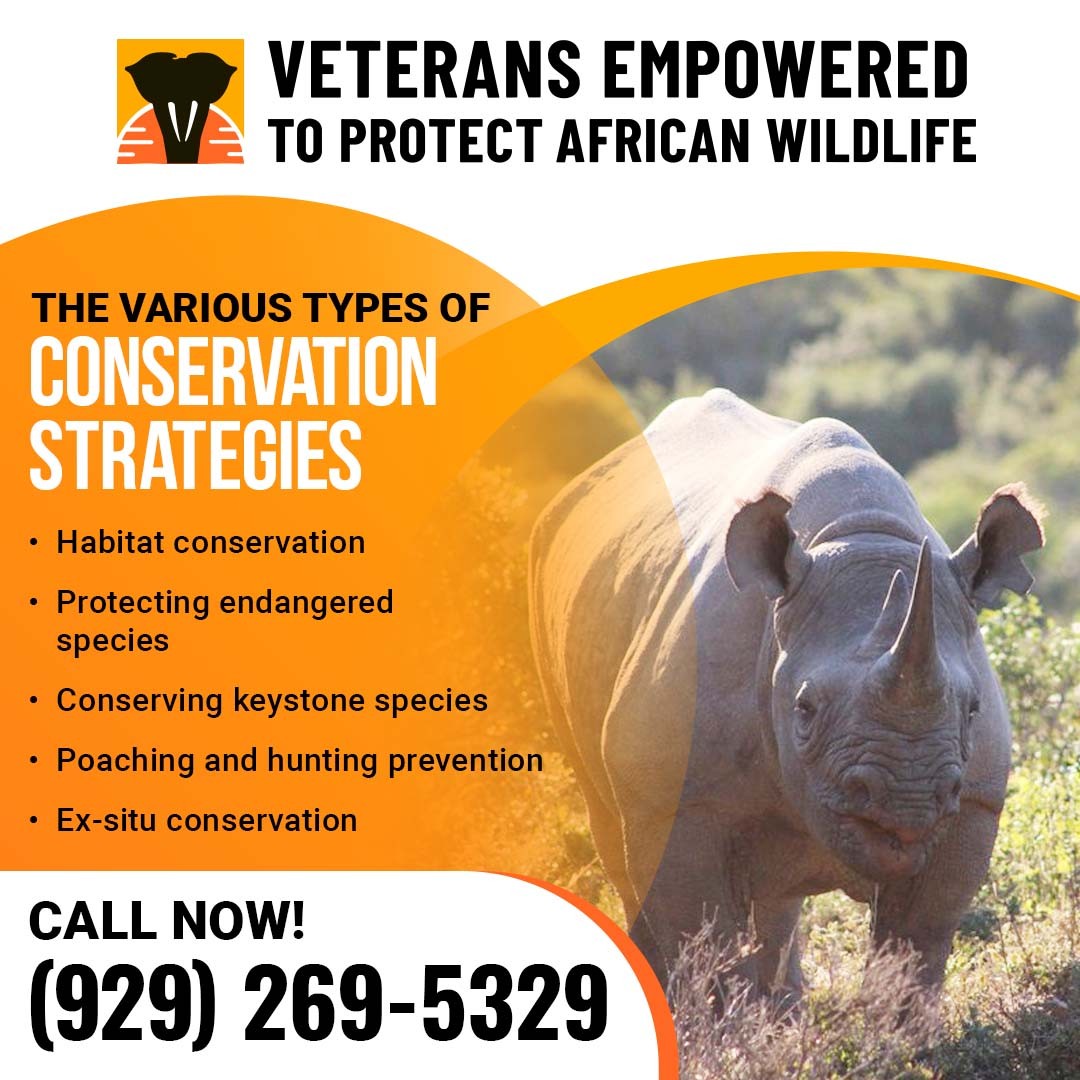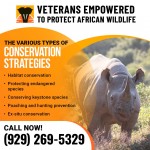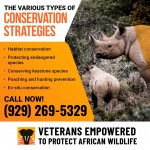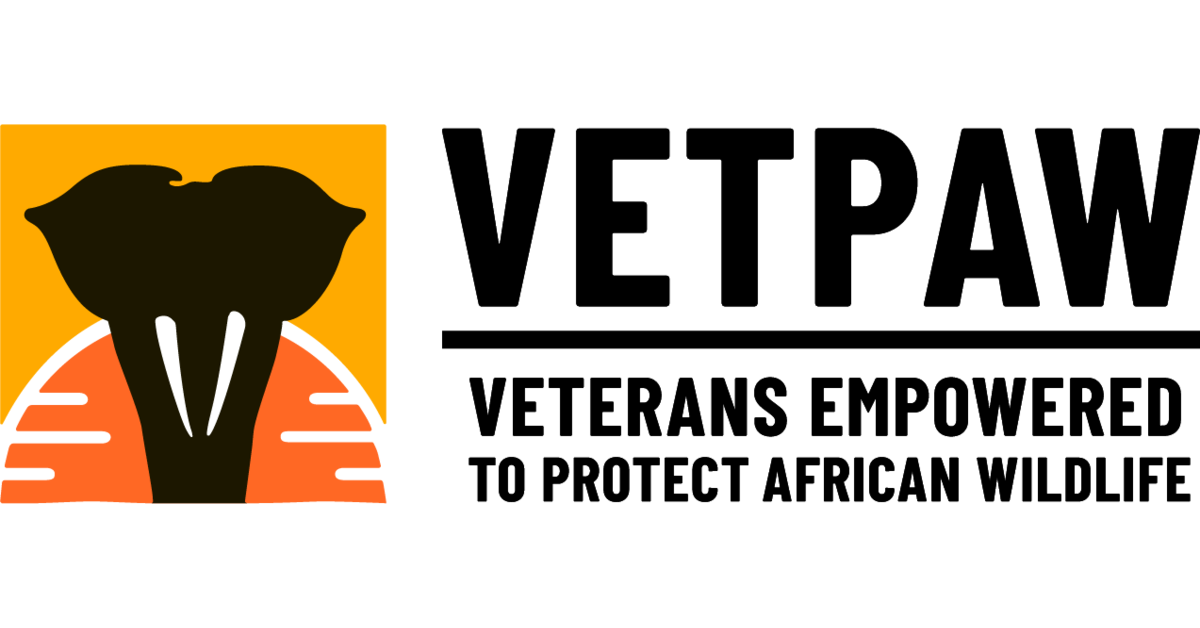The various types of conservation strategies
With wildlife under ongoing siege, the conservationists have to adopt a multi-pronged approach to conserve wildlife. VETPAW reviews the various types of wildlife conservation efforts that are being used together to protect wildlife.

-
Habitat conservation
Logging and agriculture are prime examples of human activities that lead to deforestation. This habitat destruction is jeopardizing the habitats of millions of species of plants and animals.
a. Conservation
The preservation of existing habitats requires protection from deforestation, pollution, and climate change. This approach includes identifying the habitats with high levels of biodiversity that are at risk and monitoring these areas with the support of vested communities, policymakers, and governments.
It is also imperative to keep in mind that no habitat exists in isolation. Therefore, a disturbance in one habitat will inevitably impact another habitat indirectly.
b. Restoration
Unlike conservation of existing habitats, habitat restoration is aimed at restoring ecosystems that have been disrupted. This method entails human intervention that makes the disrupted habitat self-reliant and fully functional again. These restoration efforts are based on scientific evidence and information about an ecosystem and entail continued monitoring and maintenance since ecosystems constantly evolve. This method can be, however, very resource- and time-intensive.
c. Invasive species
Invasive species are defined as species that are not native to a habitat. These have usually been introduced ‘accidentally’ and are harmful to the native species in that area. Invasive species often thrive in their non-native habitat and eventually outnumber and overpower the native species, leading to habitat loss and drastic changes in the ecosystem dynamics. Sometimes invasive species are introduced deliberately as a form of pest control but this method can easily get out of control.
Removal of invasive species is often a crucial part of habitat restoration efforts, but the removal of animals often leads to controversy.
-
Protecting endangered species
About 99% of the endangered or threatened species as per the Endangered Species Act in 1973 have avoided extinction due to the consequent conservation efforts. Endangered species are the species that are under threat of extinction for either their whole range (where they’re found during their lifetime) or a majority of it. Threatened species are the ones that are likely to be put on the ‘endangered’ list within the near future.
The classification and protection of endangered species have played a significant role in wildlife conservation. Once a species is listed as endangered or threatened, it receives federal protection against poaching, harassment, or capture, besides preservation of its critical habitat.
Beyond the US borders, the Convention on International Trade and Endangered Species (CITES) monitors the international trade of wildlife for the protection of endangered species.
-
Conserving keystone species
A keystone species is the one on which other species in an ecosystem largely depend, such that if it were removed the ecosystem would change drastically. Conservation of keystone species focuses on one species allowing for the economy of resources rather than trying to tailor efforts towards each species in the ecosystem.
The extinction of keystone species such as rhinoceros, elephants, cheetahs, and pangolins can lead to a loss of biodiversity. For instance, elephants play a vital role in maintaining African savanna ecosystems.
Keystone species do not necessarily have to be endangered. They can sometimes have an important role in maintaining the habitat of another species that could be threatened or endangered.
-
Poaching and hunting prevention
Poaching and trophy hunting are other big threats to wildlife, especially the keystone species. These illegal activities almost led to the extinction of the black rhino before the conservation efforts kicked in. Wild animals are poached, hunted, or captured for things like ivory or horns as well as for the exotic animal trade.
Preventing the hunting and capture of animals in the wild is one of the most critical conservation methods today. The economic plight of local communities leads them into activities such as poaching. Therefore, conservationists aim to create sustainable and legal means of earning livelihood for these communities. However, poaching laws differ from country to country making it difficult to address certain illegal trades.
-
Ex-situ conservation
All the types of wildlife conservation addressed above are referred to as ‘in-situ’ conservation, which means that the conservation of ecosystems occurs in natural habitats. Ex-situ conservation, on the other hand, refers to protection efforts that exist outside of that habitat, such as in botanic gardens, zoos, safaris, or wildlife rehabilitation centers.
Ex-situ conservation is effective in preserving wildlife and preventing total extinction, but due to the amount of human intervention the species and the ecosystems cannot become self-reliant. Moreover, this method can be highly resource-intensive, requiring the appropriate technology for the preservation or care of live plants and animals.

VETPAW - Veterans Empowered to Protect African Wildlife
Founded in 2013, VETPAW is a non-profit organization and a community of US war veterans dedicated to protecting African wildlife and training local African rangers in the war against poaching.
Visit website or call at (929) 269-5329 to know VETPAW is legit and to make a contribution or volunteer for sustainability and wildlife conservation.


























